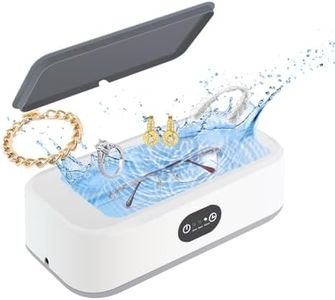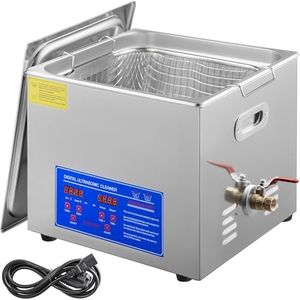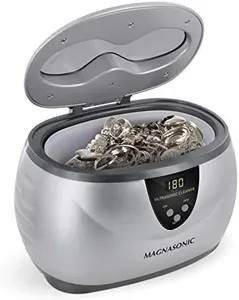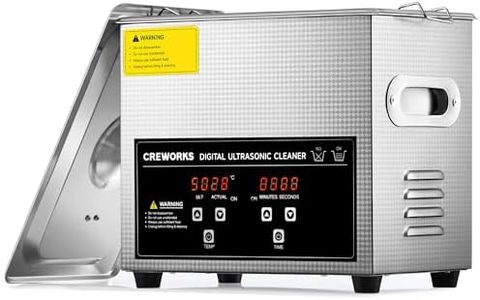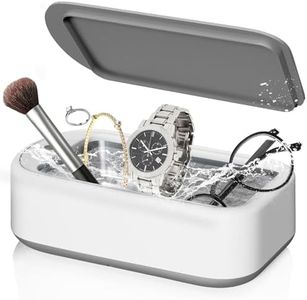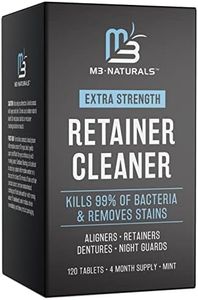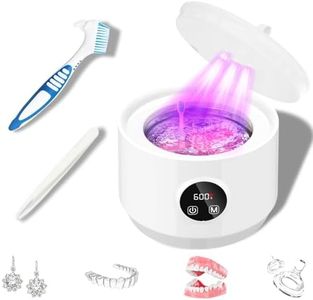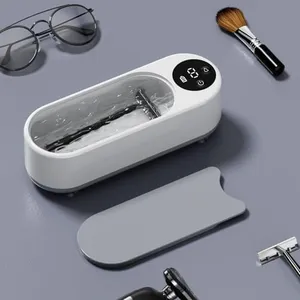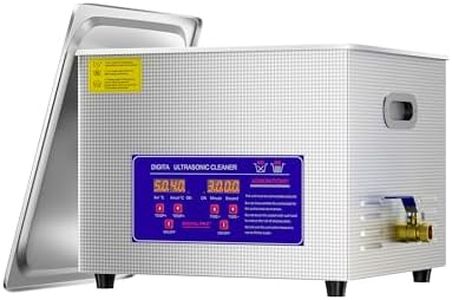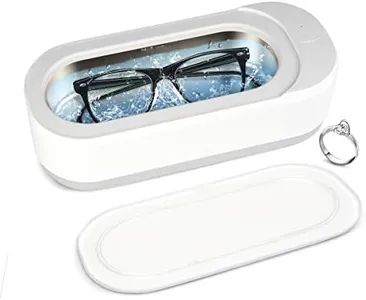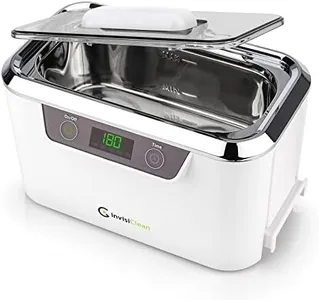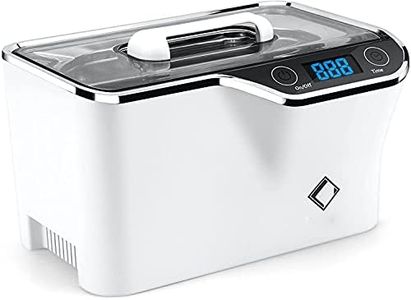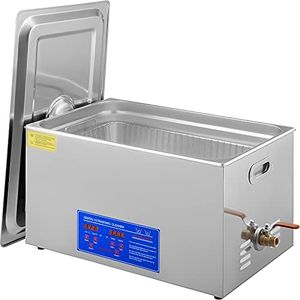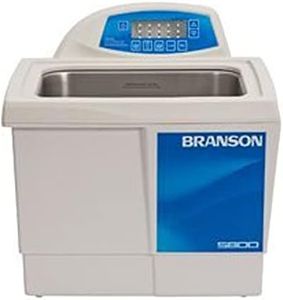We Use CookiesWe use cookies to enhance the security, performance,
functionality and for analytical and promotional activities. By continuing to browse this site you
are agreeing to our privacy policy
10 Best Ultrasonic Baths 2025 in the United States
How do we rank products for you?
Our technology thoroughly searches through the online shopping world, reviewing hundreds of sites. We then process and analyze this information, updating in real-time to bring you the latest top-rated products. This way, you always get the best and most current options available.

Buying Guide for the Best Ultrasonic Baths
Ultrasonic baths are essential tools for cleaning delicate items such as jewelry, laboratory instruments, and electronic components. They use high-frequency sound waves to create cavitation bubbles in a liquid, which effectively remove dirt and contaminants from the surfaces of the items being cleaned. When choosing an ultrasonic bath, it's important to consider several key specifications to ensure you select the best model for your needs. Understanding these specifications will help you make an informed decision and achieve optimal cleaning results.FrequencyFrequency refers to the number of sound wave cycles per second, measured in kilohertz (kHz). This spec is important because it determines the size and intensity of the cavitation bubbles. Lower frequencies (20-40 kHz) produce larger bubbles and more aggressive cleaning, suitable for robust items like metal parts. Higher frequencies (40-80 kHz) create smaller bubbles for gentler cleaning, ideal for delicate items like jewelry and electronic components. Choose a frequency based on the fragility and type of items you plan to clean.
Tank CapacityTank capacity is the volume of the ultrasonic bath's cleaning tank, usually measured in liters. This spec is important because it dictates the size and number of items you can clean at once. Small tanks (1-2 liters) are suitable for personal use or small items like rings and eyeglasses. Medium tanks (3-10 liters) can accommodate larger items or multiple small items, making them ideal for small businesses or laboratories. Large tanks (10+ liters) are designed for industrial use or cleaning large items. Choose a tank capacity based on the size and quantity of items you need to clean regularly.
PowerPower, measured in watts, indicates the energy output of the ultrasonic transducers. This spec is important because it affects the cleaning efficiency and speed. Lower power (30-100 watts) is sufficient for small, delicate items and light cleaning tasks. Medium power (100-300 watts) provides more thorough cleaning for a wider range of items. High power (300+ watts) is necessary for heavy-duty cleaning and large tanks. Choose a power level that matches the intensity of cleaning required for your items.
TimerA timer allows you to set the duration of the cleaning cycle. This spec is important because it ensures consistent cleaning times and prevents overexposure to the ultrasonic waves, which could damage delicate items. Basic timers offer manual settings for short durations (1-30 minutes), suitable for occasional use. Advanced timers provide programmable settings and longer durations (up to 99 minutes), ideal for frequent or varied cleaning tasks. Choose a timer based on how often and how precisely you need to control the cleaning time.
HeatingHeating capability allows the ultrasonic bath to warm the cleaning solution, enhancing the cleaning process. This spec is important because heat can help dissolve contaminants more effectively. Basic models may not have heating, suitable for simple cleaning tasks. Models with adjustable heating (up to 80°C) provide more thorough cleaning for stubborn residues. Choose a model with heating if you need to clean heavily soiled items or want to improve cleaning efficiency.
Material and Build QualityThe material and build quality of the ultrasonic bath, particularly the tank, affect its durability and resistance to corrosion. Stainless steel tanks are common and provide good durability and resistance to cleaning solutions. Higher-grade stainless steel or additional coatings can offer enhanced durability for industrial use. Choose a model with a build quality that matches the frequency and intensity of your cleaning tasks to ensure longevity and reliability.
Most Popular Categories Right Now
